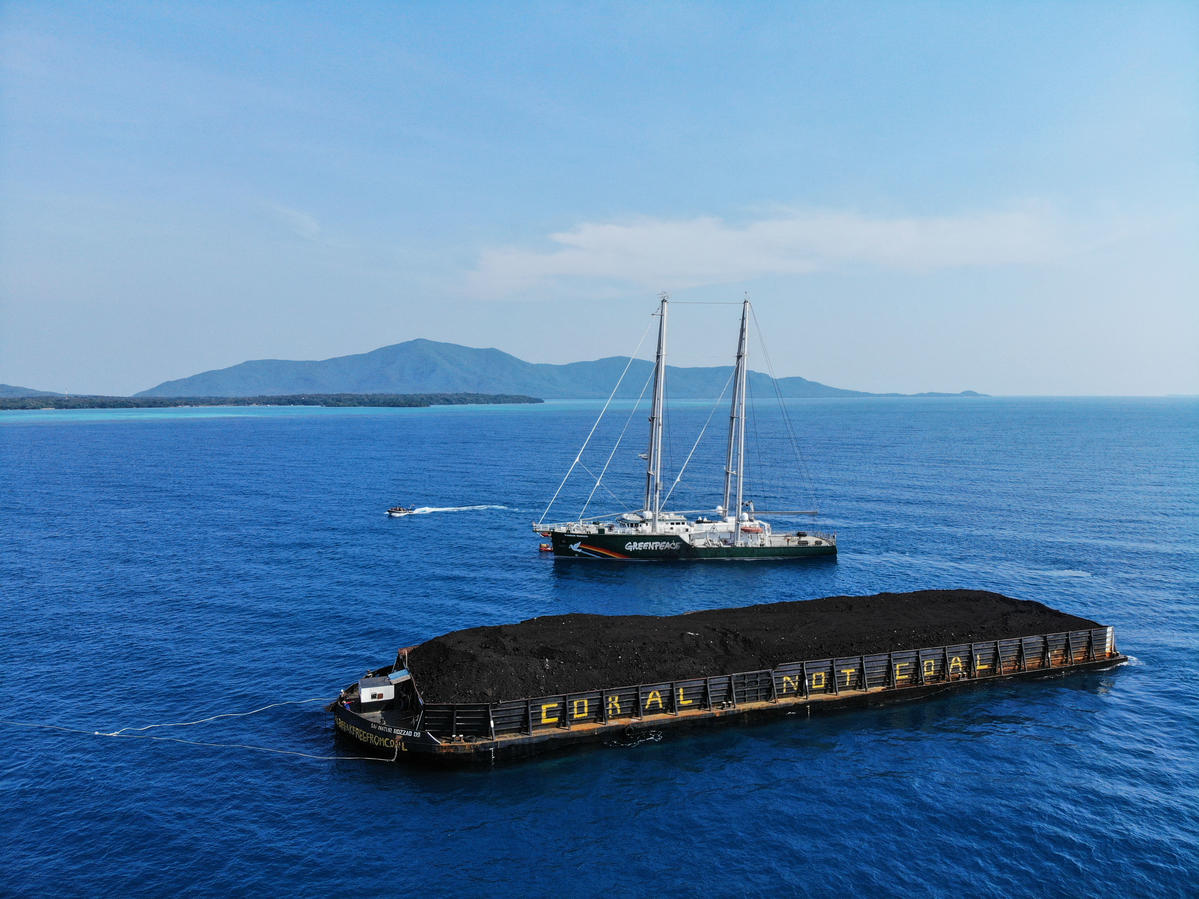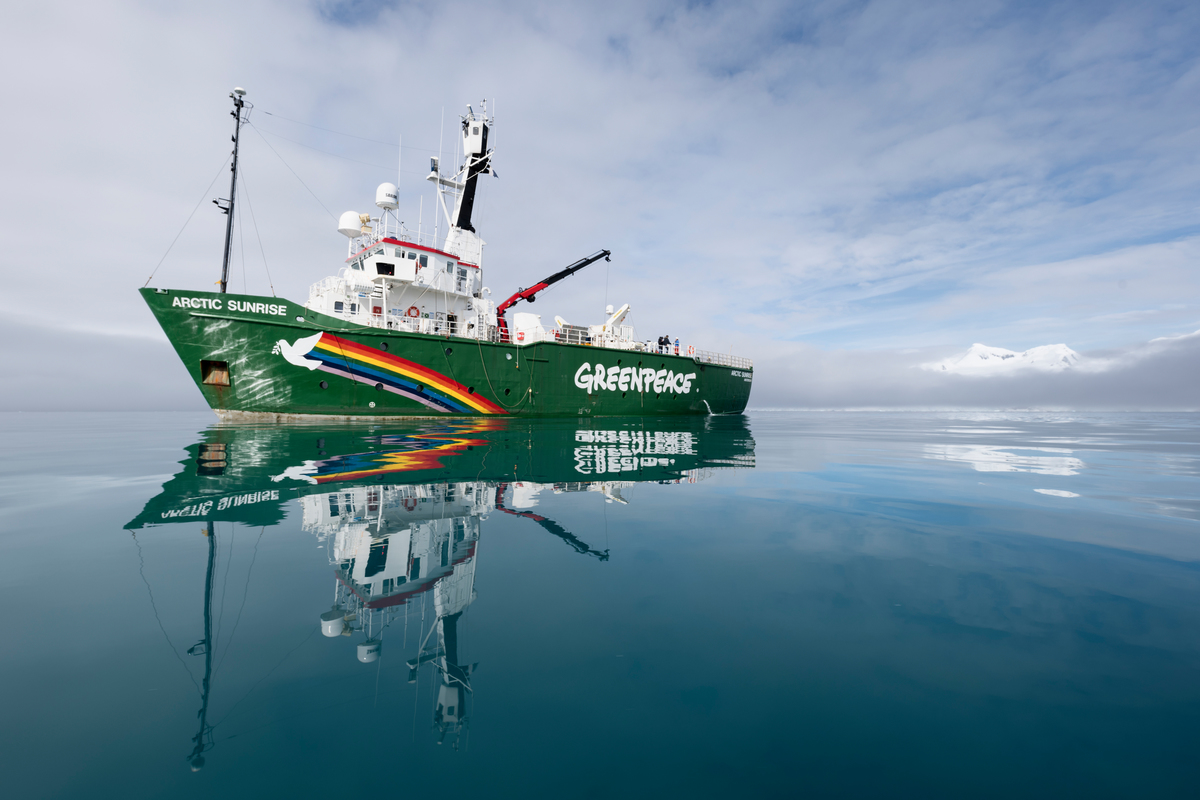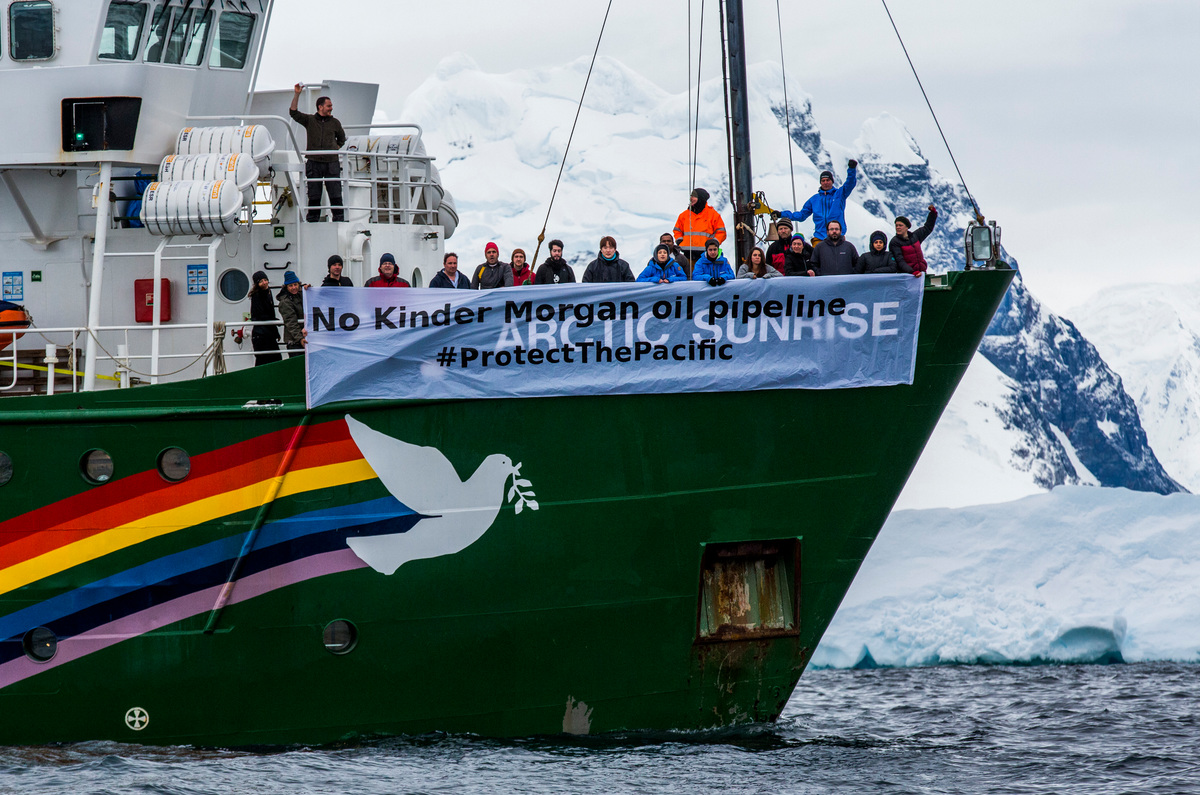At the mention of Greenpeace, images of our iconic ships spring to mind for many people. For nearly 50 years we have been sailing the world’s oceans, protecting our planet and fighting for environmental justice. With crews that come from all over the world and all walks of life, our ships are fundamental to our campaigns for carrying out scientific expeditions and taking action against environmental destruction.
The Rainbow Warrior
The first and most famous of our ships, The Rainbow Warrior is an undisputed icon.
The first Rainbow Warrior was bombed in 1985 while campaigners protested nuclear testing in the Pacific. After 22 years of activity that included blocking coal ports and closing down destructive fishing operations, Rainbow Warrior II retired from Greenpeace life in 2011.
Our current ship, Rainbow Warrior III, was designed and built specifically for our use.
The newest Rainbow Warrior is as fast as many industrial vessels, with action boats that can be deployed in minutes – even in waves up to 3.5 meters high. Its helicopter landing pad means we can deploy a vital eye in the sky, enabling us to spot illegal fishing operations and shipments of illegal wood.
The ship can carry specialised equipment up to 8 tonnes in weight and designed so that scientists can work on board. By supporting original scientific research, we help build understanding of what is happening to our planet’s ecosystems.
The on-board satellite communications system – featuring a built-in satellite uplink – means the new Rainbow Warrior is able to stream live footage from the scene of environmental crimes direct to the world’s media.
Vitally, the third Rainbow Warrior is as environmentally-friendly as possible for a ship of its type,
sailing primarily under wind power. Its 55m-high A-Frame mast system can carry far more sail than a conventional mast of the same size. The Warrior does have electric drive engines to help out when the weather isn’t suitable, but these are also built with sustainability in mind.

Activists from the Greenpeace ship Rainbow Warrior intercept barges carrying coal from mines in Kalimantan to power plants in Java, Indonesia. The barges are targeted as they pass through the stunning Karimunjawa archipelago, in protest against the damage being done to coral reefs in the area.
Since January 2018, there have been three incidents where coal barges have damaged the reefs. In early 2017, hundreds of square meters of coral were destroyed by five barges taking shelter during storms.
The Rainbow Warrior remains to this day a symbol of non-violent direct action and a beacon of hope.
The Arctic Sunrise
Designed as an icebreaker, the Arctic Sunrise has witnessed the wonders of the coldest places on Earth. Having a rounded hull with no keel, the ship lifts out of ice instead of being crushed by it.

Greenpeace ship the Arctic Sunrise at Livingston Island, Antarctica. Greenpeace is conducting submarine-based scientific research to strengthen the proposal to create the largest protected area on the planet, an Antarctic Ocean Sanctuary.
The Arctic Sunrise has been part of the Greenpeace fleet since 1995 and its first trip to the North Sea to document marine pollution by oil from offshore installations.
During its colorful history, the Arctic Sunrise and 30 Greenpeace crew members were detained by Russian authorities in 2013, during a peaceful protest that was calling attention to the threat of oil drilling and climate change at Gazprom’s oil rig outside the north polar circle.
After spending two months in prison the crew were released on bail, then finally freed altogether with all charges dropped.
The Arctic Sunrise itself was returned to Greenpeace after nine months at port in Murmansk, having suffered considerable damage during the arrest and detention. A later court case affirmed the right to peaceful protest against oil drilling in the Arctic and the Russian government were ordered to pay damages.

The international team aboard the Arctic Sunrise in Paradise Bay in the Antarctic, displaying a banner in solidarity with the activists and Indigenous Water Protectors taking action against a massive oil pipeline and supertanker project Texas oil company, Kinder Morgan, is building on the Pacific Coast in Canada.
The ship has been all over the planet, including the Congo, the Amazon and most recently completed a three-month expedition to the Antarctic to conduct scientific research on biodiversity in the region.
The Esperanza
Esperanza (Spanish for ‘hope’) is the first Greenpeace ship to be named by visitors to our website and is the largest and swiftest ship in our fleet. A former Russian fire-fighting vessel, Esperanza has spent the last 15 years fighting environmental emergencies.
From disrupting illegal fishing off the coast of Sierra Leone, to thwarting Japanese attempts to pursue its so-called ‘scientific’ whaling programme, the Esperanza works tirelessly to protect our oceans and vulnerable marine life.
At 72 metres length, and a top speed of 16 knots, the ship is ideal for fast and long range work, and its ice class status means it can also work in polar regions.
Ultimately, our ships and crews cannot continue to function without our supporters. People from all over the world choose to donate their time and money to make it all possible, and it is thanks to that loyal support that our ships remain at sea.
